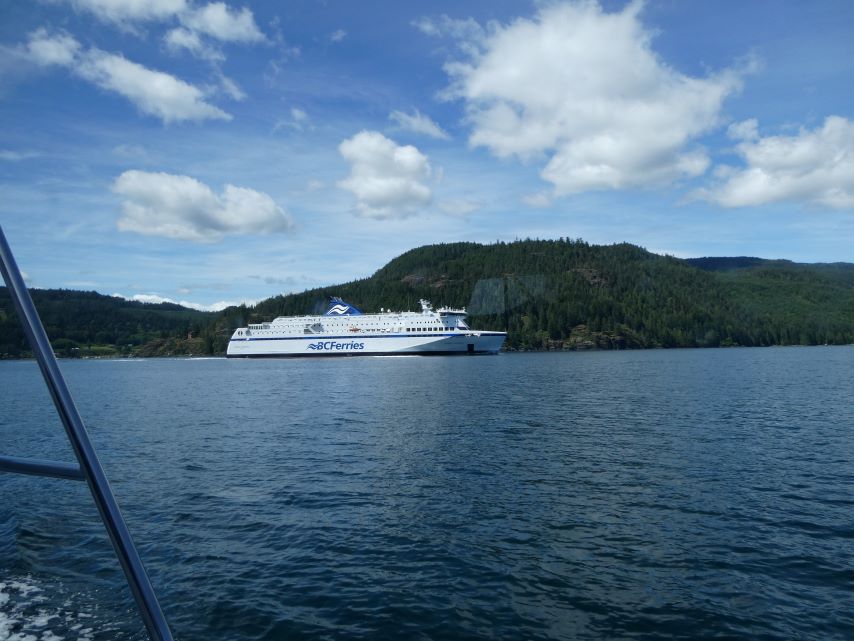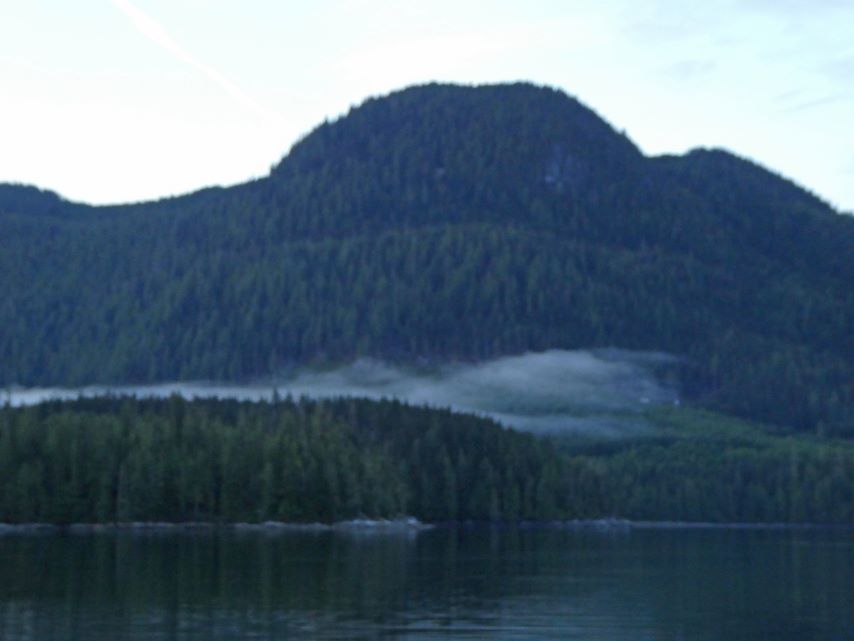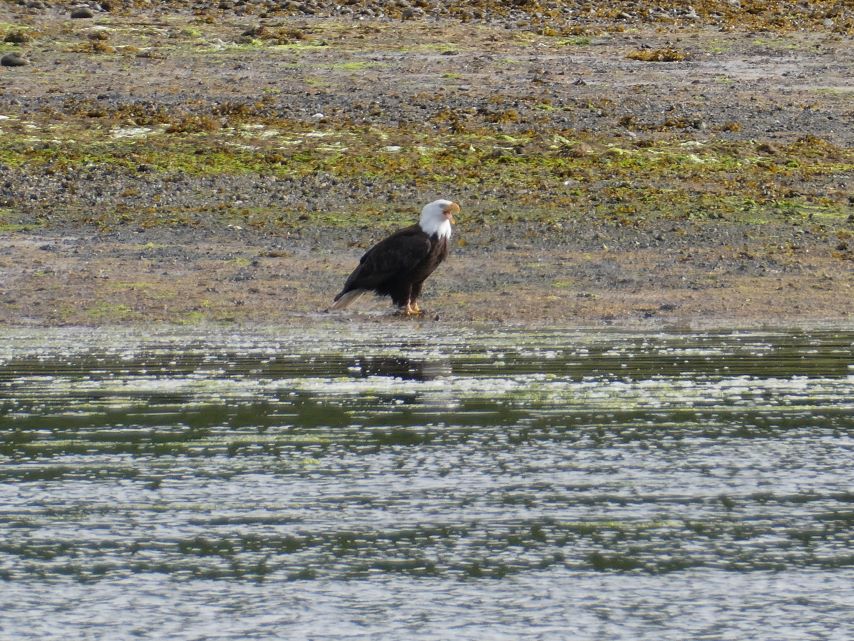The shortest most direct route from Campbell River to Port McNeill, a northern community on Vancouver Island, is to take Discovery Pass north though Seymour Narrows to Johnstone Strait and continue up the Island on Queen Charlotte Strait. The alternative is to transit the inside route through the Broughtons, which is the most sheltered route.
Choosing the coastline of East Vancouver Island should not be done on a whim, you must be constantly aware of the wind, tides, currents, floating logs and other boats.
Below is a description of Seymour Narrows and Johnstone Strait from our Waggoner’s Cruising. You can never have to much information; we have several guide books with us.
Seymour Narrows
“Northbound vessels: On small tides, northbound vessels should arrive off Maud Island light an hour before the end of the ebb, or an hour prior to high water slack, before the ebb begins. Once into the narrows, steer toward the tongue of the current stream (east of mid-channel) to avoid the whirlpools and eddies north of Maud Island up to North Bluff. On big tides, low-powered vessels will find it prudent to be at the Maud Island light at high water slack or just a few minutes into the north flowing ebb.
If the slack is at low water, arrive at the pass before the end of the ebb. Slack on large tides is not very long, five to ten minutes at most. You’ll want to be past Brown Bay before the southflowing flood gets underway. It can be brutal in a slow-moving boat. You may find a back eddy along the eastern shore. On a large flood, Seymour Narrows can reach 16 knots, no place to be in any kind of boat…Stay on your side of the channel (i.e. to starboard) to clear of any tugs or large ships headed the other way. The good news about Seymour Narrows is that there are no obstructions and just one strong, main stream.”
Johnstone Strait
“Johnstone Strait is a seductive and difficult body of water. The strait begins at Chatham Point in the east, stretches 54 miles along the northeast side of Vancouver Island to Blinkhorn Peninsula. It is the shortest route up- or down-island. Especially when on the Vancouver Island side, Johnstone Strait bound by steep, high and beautiful mountains. On a clear day the scenery is awesome.
That is the seductive part. The difficult part is what the wind and current in Johnstone Strait do to each other. The flood current flows eastward, down-island, toward Discovery Passage and Campbell River. The ebb current flows westward, up-island, towards Charlotte Strait, increasing the west-flowing ebb current’s strength and duration. In the summer the prevailing wind in Johnstone Strait is a westerly, often a gale-force westerly, funneled by the mountains. The result is a classic wind-against-current heaping up of the seas…Despite the potential problems, we have run the length of Johnstone Strait, both directions many times, and often had an excellent ride. But we listened to the weather and went when conditions were calm on near-calm. If the wind had come up, we were prepared to run for cover in a bay or seek out a friendly point to hide behind until conditions improve. We have always kept a bail-out point in mind. Conditions can change quickly.
Watch for drift in Jonston Strait. There’s considerable current activity and many shear lines where scrap wood, tree limbs, logs, and even entire floating trees accumulate.”
Rick spent hours studying the guidebooks and listening to weather forecasts before we made a decision ; we would go though Seymour Narrows spend the night at Blind Channel Resort and wait till the Friday morning weather forecast to make the final decision, Jonnstone Strait or the Broughtons.
Seymour Narrows (May 30-Thur)
Beautiful blue skies with wonderful billowing white clouds. Mother Nature certainly blessed us with a beautiful day.








Blind Channel Resort (May – 31 Fri)
Up at five on Thursday morning we checked all of our weather apps and they all agreed, it will be a good for traveling Johnstone Strait This was our chance, Johnstone Strait it is. Not so many pictures today, I was busy watching for markers, logs, boats, ferries. In the process I saw birds, seals, otters and a dead head (a log the is floating vertical and can cause a lot of damage to a boat). I was a bit surprised that the depth gauge bottomed out at 1,680 feet deep.



Johnstone Strait
Mother Nature may not have given us blue sky’s with billowing white clouds today but she certainly provide us with outstanding views of snow covered mountains.






Port McNeill (May 31-Fri)
Welcome Party


